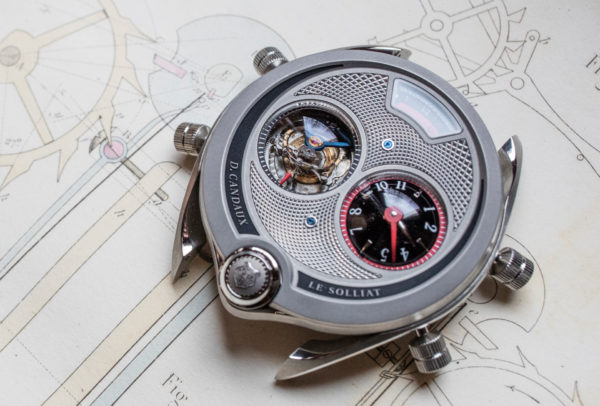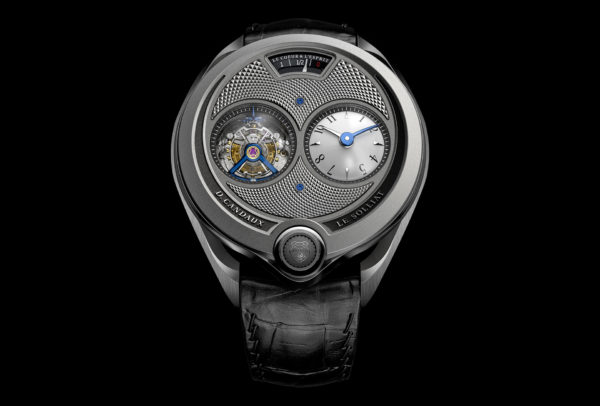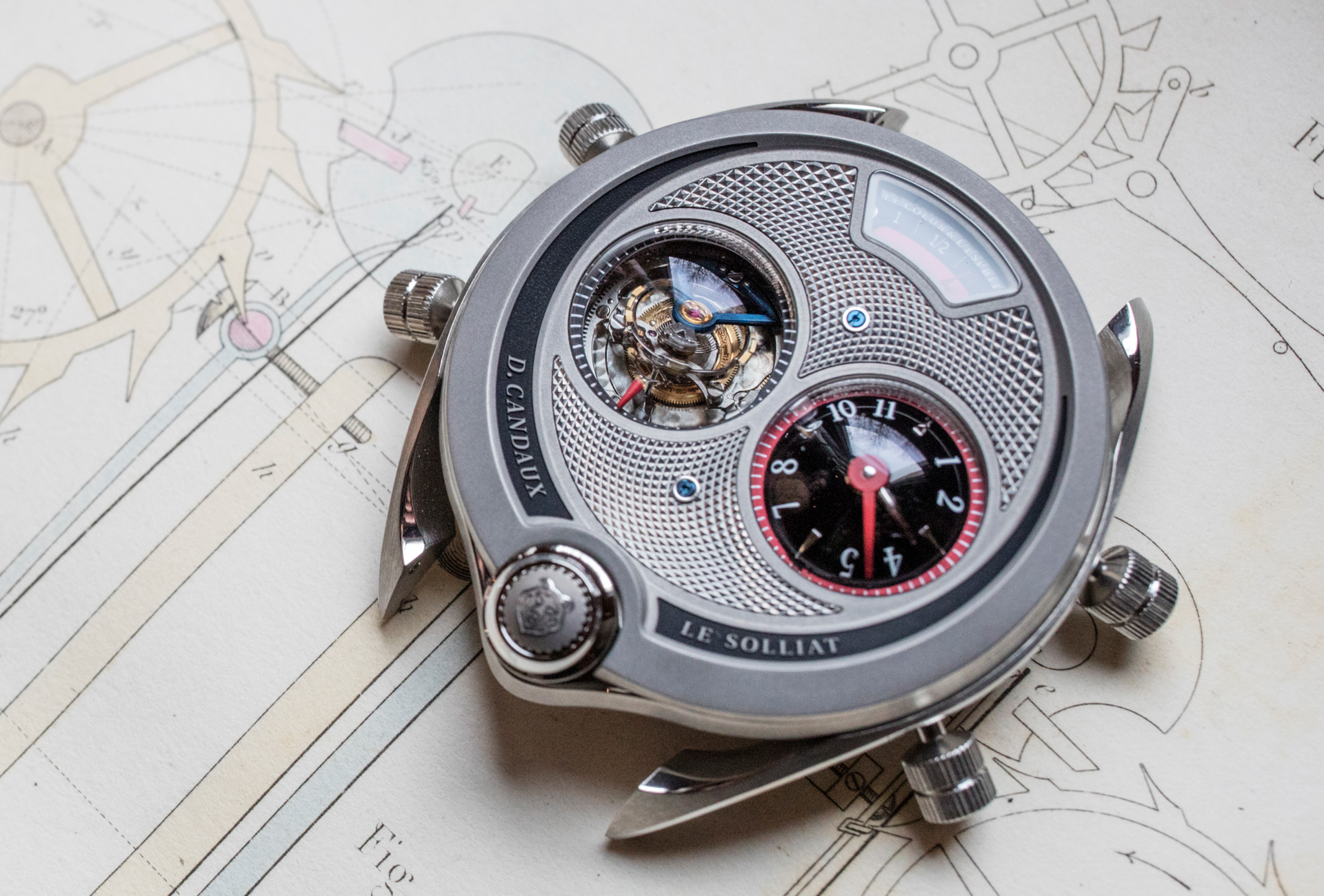Knock at David Candaux’s atelier in Vallée de Joux, and chances are he’ll come to the door with his watchmaker’s loupe firmly affixed to his forehead, like a third eye. But any similarity with Hinduism stops there. Rather, David Candaux perpetuates a local tradition. As with the farmers of yore, who became watchmakers during the gruelling winter months, home and workshop are one: a stout building in the tiny village of Le Solliat, a couple of hundred metres from independent watchmaker extraordinaire Philippe Dufour. The two men are close. “He [Dufour] encouraged me to apply to the AHCI and, with Miki Eleta, nominated me for membership,” says the 39-year-old. For two years, the Academy’s admission criteria would put the young watchmaker, his working methods and his contribution to the field to the test, until the final verdict. To be successful, a candidate must receive at least 29 votes out of 30. For Candaux, induction into the AHCI was “the most incredible acknowledgement, like the Académie Française for a writer!”
"Heart and mind"
David Candaux is a rare beast. An all-rounder. Not only does he decorate, assemble and adjust every one of his timepieces, he is one of the few to also design and engineer every aspect of his movements and every component in them. “When starting work on a watch, I sit down with a blank sheet, like an artist creating something completely new. I let my creativity flow… which implies a lot of hard work,” he adds, laughing. An example: for the first D.Candaux 1740 First 8, he spent seven months developing his own escapement, knowing full well that a supplier could provide him with a “plug and play” solution. But as he says himself, “that’s the kind of watchmaking that makes me tingle, when I’m swept along by inspiration.”
Son and grandson of master watchmakers, David’s passion for time measurement is rooted in childhood memories; those of a boy barely tall enough to see over the workbench. At 14 he joined Jaeger-LeCoultre as its youngest apprentice. Two visionary leaders, Henry-John Belmont and Günter Blümlein, cemented his passion for watchmaking. Today, David Candaux engraves his watches with Günter Blümlein’s words: “A watch must speak to the heart and to the mind”. Le coeur et l’esprit. It was at Jaeger-LeCoultre that he learned about construction, giving him an outlet for his creativity. He went on to work with several of the leading names in Haute Horlogerie and to invent futuristic, complicated, revisited, even traditional watches. At the same time, he restored antique timepieces, studied history and engineering, honed his skills and added an MBA to his list of qualifications.

Away from the workbench, Candaux loves “wide-open spaces, breathing in the air.” Leisure time revolves around nature, from trail running to the Patrouille des Glaciers, a race he enjoys as much for the skiing as “for the team spirit.” He and his wife have restored a “mazot” (a Swiss log cabin) and, in the swing of things, the building in Le Solliat where they now live – so well, in fact, that their home has featured in architecture magazines. “I guess I’m just curious,” he observes. “I like to try my hand at different things and get the most out of every second life gives me, although the most precious moments are the ones spent working alongside my father [Daniel, the “D” in D.Candaux] while my daughter and son play in the garden.”
The asymmetry of the 1740
Over time – 17 years to be precise – David Candaux devised his ideal watch. In 2017 he presented the 1740 First 8, a limited edition of eight pieces. The 1740 name refers to the first year a watchmaker was officially documented as working in Vallée de Joux. “Every one of my watches derives from the history of Vallée de Joux, a history I aim to perpetuate.” The 1740’s asymmetrical form breaks with the rules of classical watchmaking. Case, dial and movement are inclined, being higher at 12 o’clock and lower at 6 o’clock, to facilitate read-off and give the watch a contemporary, three-dimensional appearance. The movement and its components were all purpose-designed and made. “I attach a great deal of importance to the aesthetic, to the smooth line of a watch.” So as not to interrupt the equilibrium of the case with a protruding crown – a visual “hiccup” that has been bugging watchmakers for years – David Candaux has developed and patented a pop-up crown made from 31 components. He decorates it with a bear’s head, a familiar creature of the surrounding forests that happens to be his nickname, too.
Each component is chamfered, polished and snailed by hand, or decorated with his own "Côtes du Solliat" finishing that is impossible to copy.
David Candaux constantly draws on his experience, thinking every detail through. “My movements are in titanium which I decorate but leave untreated. Titanium is unalterable. I chose it to facilitate restoration and as a replacement for the German silver of old.” Each component is chamfered, polished and snailed by hand, or embellished with a finish of his own design: the “Côtes du Solliat” that no modern machine can copy. Last of all, to ensure its longevity he engraves the watch’s technical specifications on the plate, for the benefit of future watchmakers who might repair or restore the piece.
The 1740 Half-Hunter, from sea to forest
Last year David Candaux presented the 1740 Half-Hunter, since reinterpreted in sportier versions with splashes of colour. This new timepiece was inspired by two of watchmaking’s classic inventions: the precision instruments used by seafarers, which were often placed under transparent domes, and the half-hunter form of a protective cover with openings through which to view the indications. Accordingly, the tourbillon and the spherical micro-dial for hours and minutes are set beneath sapphire domes while the rest of the “dial” is open to the touch. The guillochage is executed on a period rose-engine lathe, but in a pattern of his own invention – “Pointes du Risoud” – that recalls an aerial view of the fir trees in the neighbouring forest. Their wood is reputed for its unique acoustic properties, and is used to craft Alpine horns!

So what’s next? “I’m working on a new movement,” says Candaux. “I feel like a kid inventing his dreams. Of course it will be a continuation of the valley’s watchmaking history. A three-hander, but don’t expect something simple. I’m redesigning just about every one of the movement components. My friends call it ‘Candaux-style’!”





















